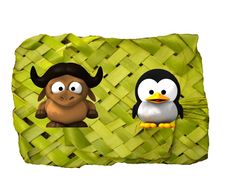Warrington School/Curriculum/Inquiry Process
From WikiEducator
Contents
the "AND" inquiry process
Immersion in:
- Knowledge, concepts, processes and skills
- Issues or further aspects which will engage emotionally and cognitively
- Opportunities to check consolidation of past learning; and to check if learners actually know what they are intending to focus on
and how is this learning going to make a difference in their life or the lives of others?
Brainstorm Ideas
- Engage learners in brainstorming what they know about the focus challenge/s using a recording tool of their choice
- Invite learners to determine what they will need to know; these wonderings may be incorporated into the inquiry
- Learners need to design questions that consider and?
Plan
- Share with learners the classroom models indicating the skills, tools and strategies that they will be introduced to during the inquiry process
Brian theories, learning philosophies etc
- Learners once they develop their understanding of thinking will use planners with guidance
- Inquiries using the thinking framework of their choice
Planner
- Provide learners with a planner that outlines the entire learning journey; all steps should be clearly identified
Criteria
- Create with learners criteria in the format of a rubric; learners will reference this criteria to self evaluate
Investigate/Organise/Internalise
- Provide learners with the learning and thinking tools associated with each stage of the inquiry for,
Knowledge/comprehension, analysis, evaluation, synthesis as each tool and/or strategy is used
- As each tool is used, it should be immediately identified
- Informal internalisation time is provided at the end of each learning session
- Learners are encouraged to record discoveries and wonderings within their learning journals at this time
- Target teaching and/or explicit whole class teaching is provided as required
- Regular debrief sessions are conducted to ensure accuracy and completeness of student accessed information
Pause for thought
- Invite learners to self select a strategy and tool for internalisation of newly accessed information - thought time
- Invite learners to self select a strategy and tool for sharing their comprehension : What do you now know?
Learners are not to ‘regurgitate’ what they KNOW - the communication vehicle is NOT assessed and evaluated - learners are simply given the opportunity to, ‘get it out’ so that they and you can determine if they need to move back before they move forward
And
- Invite learners to reconsider how they might use their new learning to make a difference in their life or the lives of others?
- Learners may continue with their original idea as per the brainstorming & question stage; they may make modifications; or
include additional actions
- Invite learners to determine a communication vehicle which will get their idea to an appropriate audience (this may result in an
additional inquiry so that learners can generate criteria for their specific communication vehicle)
- Direct learners to put their and idea into action
Innovate & Celebrate
- Direct learners to trial and monitor the results of their inquiry
- Invite learners to celebrate the learning journey while waiting to identify if their and made the intended difference
- Celebration includes a formal, informal and social time
Evaluate
- Direct learners to track the thinking skills, tools and strategies used during the inquiry
- Invite learners to identify the strengths and weaknesses of their inquiry and set goals for improving it next time

